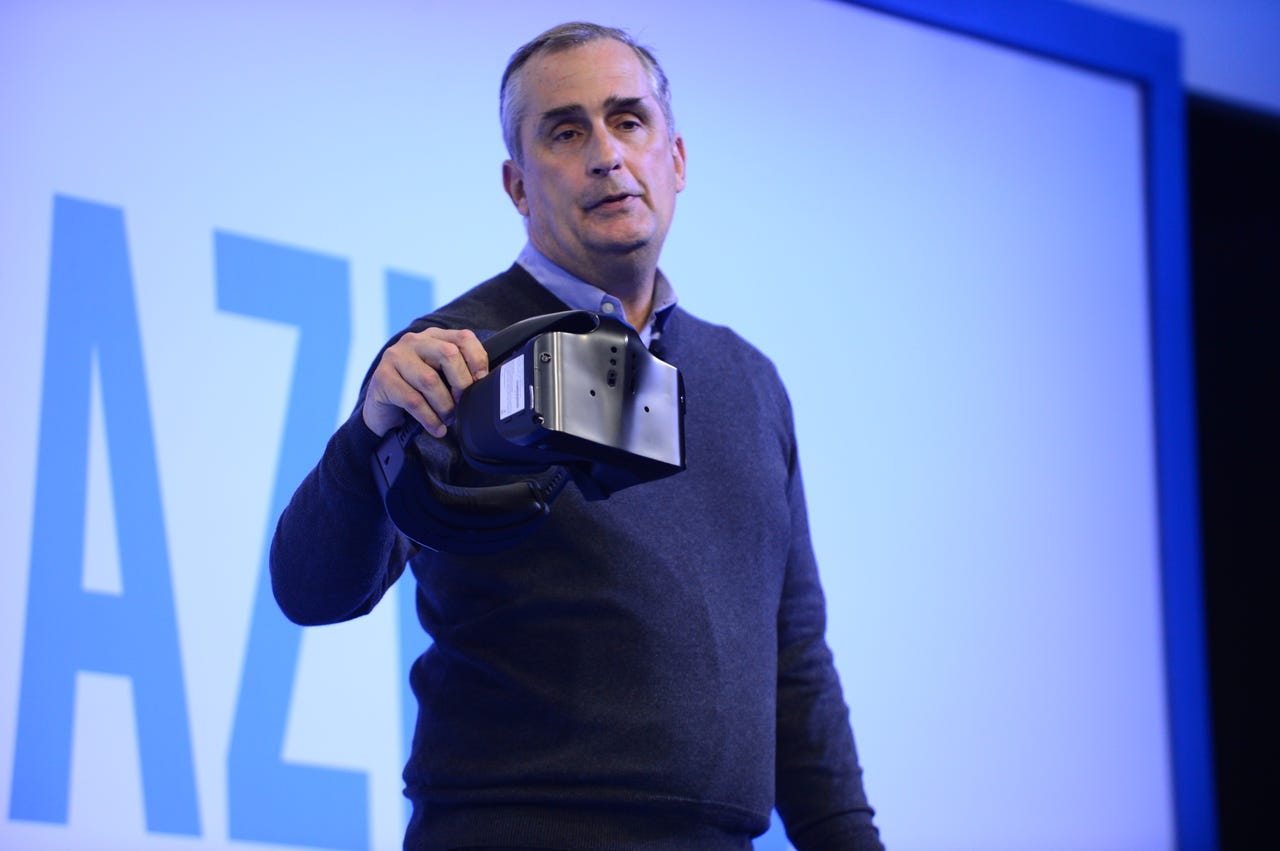At CES, Intel shows how VR will transform both work and entertainment


Brian Krzanich, Intel chief executive officer, displays the Project Alloy all-in-one virtual reality headset at a company news conference on Wednesday, Jan. 4, 2017, in Las Vegas.
Intel is demonstrating at CES this week how virtual reality is ready to move beyond the realm of gaming, thanks to new capabilities like capturing and playing back live, high fidelity video.
On January 4, Intel CEO Brian Krzanich and his team outfitted hundreds of reporters with high-powered laptops, Oculus Rift VR headsets, and barf bags. Krzanich led his audience through both pre-recorded and live VR experiences that showed how VR could transform sports and entertainment experiences, as well as work.
Using 360-degree, 4K video captured by a drone, the audience went through a live inspection of solar power panels. Krzanich gave examples of other work-related use cases for VR, such as search-and-rescue missions in the ocean or a forest. "It can save lives, it can save money and it can save time," he said.
Turning to sports and entertainment, Krzanich demonstrated how Intel plans to use the VR capabilities it acquired with the startup Voke. The audience used their headsets to watch live video of an NCAA basketball game, giving the audience the same view they'd get from sitting in a seat at the game. Along with sporting events, the functionality could allow viewers to get any perspective they want of events like award shows or concerts. Intel will be bringing Voke VR to Oculus Rift later this year, making the company one of the first to enable live sporting events on multiple VR devices.
"Viewers get to decide their point of view, viewers will get to decide what seat they have," Krzanich said.
Intel is also partnering with the computer vision company HypeVR to bring volumetric video content to Project Alloy -- the reference design for an untethered VR headset that Intel unveiled last year. The chipmaker plans to "productize" Project Alloy headsets in the fourth quarter of this year, Krzanich said, with various hardware partners.